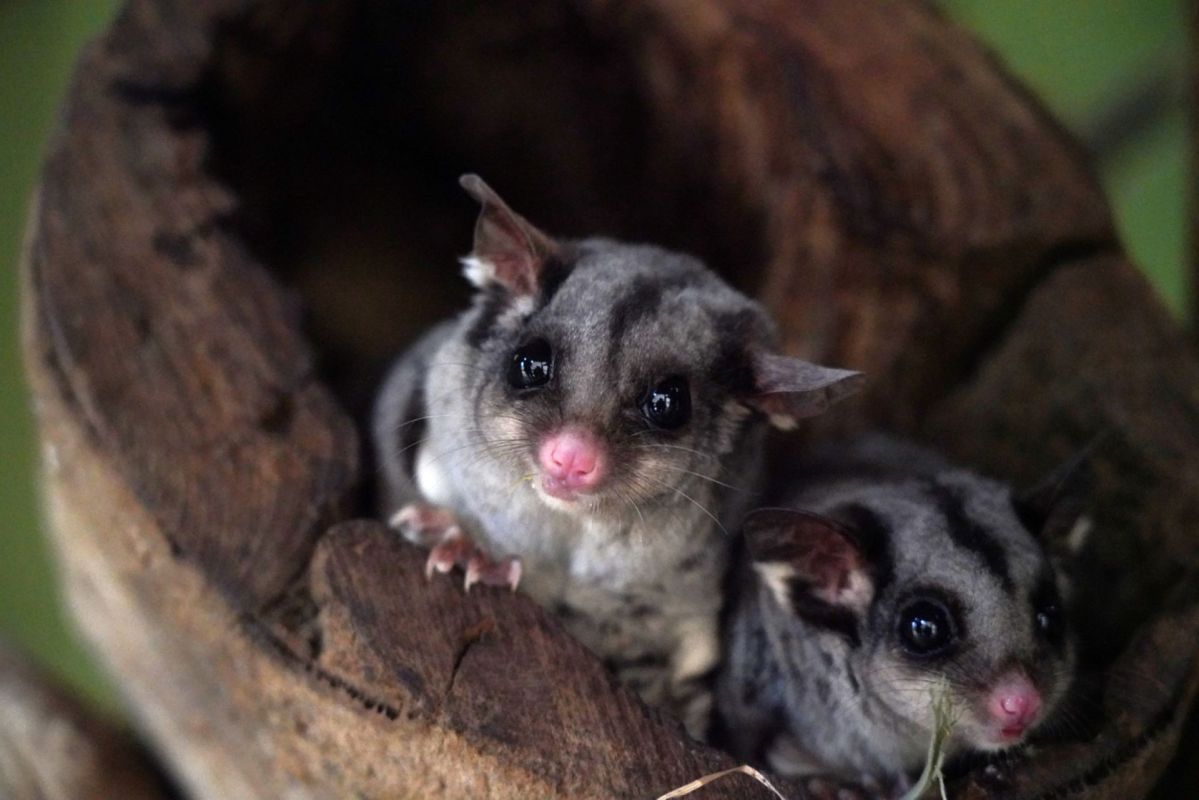In a feat of sheer acrobatics, a gliding possum (also known as a glider or flying possum) floats from tree to tree — and now pole to pole, thanks to an ingenious invention that helps them fly across roads.
These "glide poles" are really just tall timber structures that mimic the trees that gliders are built to travel between, perfect for these animals that rarely come to the ground and tend to stay up high in trees. Now, the biomimicry devices can be seen along Australia's east coast from Hume Highway in Victoria to Bruce Highway in Queensland.
You can see a video of the glide poles here.
Though the country's 11 glider species are built to fly high, road crossings can prove difficult. When habitats get broken up by obstacles like roads, it can limit gene flow, thereby decreasing the success of a species.
Glide poles help solve this problem for gliders. Researchers discovered that after installation of these devices in areas where roads previously presented a barrier, glider crossings restored gene flow within five years.
These handy glider helpers couldn't have come at a better time. In 2022, the world's largest gliding marsupial, the greater glider, was listed as endangered by the Australian government because of a population collapse of 80% over 20 years. These animals have lost a lot of habitat because of land clearing and bushfires.
Gliders aren't the only animals susceptible to road-crossing dilemmas. In Australia alone, an estimated 10 million animals are hit on roads each year. Road mortality is the second-biggest threat to Tasmanian devils, with about 350 killed each year.
These sobering stats have led conservationists to look for solutions to help save lives. In Australia, that includes koala-friendly tunnels and wildlife-proof fences.
In Canada's Banff National Park, wildlife road crossings like bridges and tunnels help deer, lynx, coyotes, wolves, wolverines, moose, elk, cougars, and bears avoid getting hit by cars. In fact, animal/automobile collisions have decreased by 80% since the Banff project launched.
Wildlife crossings are not the only strategy employed by conservationists. Others include land conservation efforts, educating local communities, and working with authorities to reduce wildlife crime. You can make a difference by not feeding wild animals, according to one expert who pleaded with animal lovers on TikTok.
Solutions like these are important to saving wildlife, as we face a sixth mass extinction because of factors like global deforestation, overconsumption of water and energy, and a warming planet. According to the World Wildlife Fund, we are losing species at a rate 1,000 to 10,000 times higher than the natural extinction rate.
"We need to conserve, protect, and restore our natural landscapes," said Brendan Taylor, a research fellow and faculty member at Southern Cross University who led an ecological monitoring program on the glider pole project, per The Conversation. "This is especially the case in a rapidly changing climate. Our unique native species need to be able to move and adapt to the changing environment."
Join our free newsletter for weekly updates on the coolest innovations improving our lives and saving our planet.









